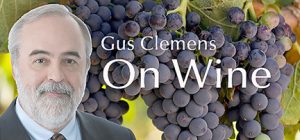While some people prefer their wine sweet, dry wines are the most popular. Trouble is, how do you define “dry?”
Individuals have their own definitions, and thereby hangs many a tale. In chemistry terms, dry is the absence or near absence of residual sugar. All wine starts out as sweet grape juice. During fermentation, yeast eats sugar and converts sugar into alcohol and carbon dioxide. When yeast eats all the sugar, the wine is dry.
Fermentation can be stopped along the way, both deliberately and by misfortune. Porto wines are sweet because neutral brandy is added to kill the yeast early in fermentation. White zinfandel is sweet because the yeast die prematurely—creating a “stuck fermentation.” Sutter Home turned that winery accident into, by far, their best-selling zinfandel.
Winemakers prefer dry because it is more stable. Wine is more susceptible to bacteria when it retains residual sugar, forcing winemakers to add ingredients such as sulfur to prevent bacteria from spoiling the wine. When Acetobacter aceti bacteria converts wine alcohol into acetic acid, the wine can smell like vinegar or nail-polish remover. Such wine will not hurt you, but you likely will not enjoy drinking it.
Then there is the sense of sweetness wine can have even without residual sugar. Called “phenolic” or “physiological” sweetness, it is the sensation caused by ripe grape skins and stems. These wines tend to be straightforward, symmetrical, and generous—and pleasurable in basic sensual terms. Your mind associates ripeness with sugar sweetness even when there is no sugar.
Alcohol, too, can taste sweet even though its production by yeast is what turned sweet grape juice into dry wine. A chemist can assure you a wine is dry, but the final call is in the palate of the beholder.
Tasting notes:
• Bonterra Young Red 2017: Part of new wave of red wines made to be served chilled. $16-17 Link to my review
• Gloria Ferrer Blanc de Noirs, Carneros NV: Exceptionally nice example of fresh and fruity sparkling at this price. $21 Link to my review
• Stark-Condé Cabernet Sauvignon, Stellenbosch, South Africa 2017: Bold, easily approachable big red wine. $22-27 Link to my review
• Cedar + Salmon Cabernet Sauvignon, Horse Heaven Hills 2016: Soft, rounded, easily approachable side of cabernet sauvignon. $23-25 Link to my review
• Chehalem Pinot Noir Corral Creek Vineyard 2019: Delicate, nuanced, ethereal. Excellent example of Oregon pinot. $50 Link to my review
Last round: I have jokes about pizza, but I refrain from telling them because they are so cheesy. When I do tell them, however, I pair them with dry red wine.
Email: wine@cwadv.com. Newsletter: Newsletter link. Website: gusclemensonwine.com. Facebook: Gus Clemens on Wine. Twitter: @gusclemens

